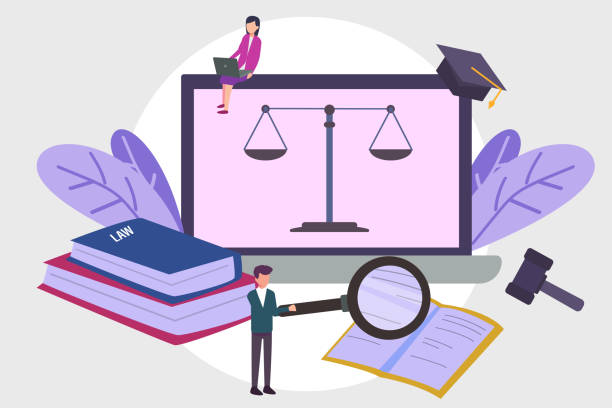By: Patrick E. Longan
W.A. Bootle Chair in Ethics and Professionalism
Mercer University School of Law
One of the first lessons I learned about teaching professional identity was Neil Hamilton’s oft-repeated observation that we must “meet the students where they are.” This may also be the most important lesson I have learned.
Let me give you an example. At Mercer, a big part of our professional identity course is a series of small group discussions of hypothetical dilemmas the students might face in practice. In one, they are in role as a junior partner in a large firm and discover evidence that a more senior partner, who is a rainmaker and the source of most of their work, may be overbilling their biggest client, a large corporation. The students are asked to come up with a plan for how they are going to proceed and to be ready to convince others in the small group discussions of the wisdom of the chosen course.
This is a classic problem of practical wisdom. There are many values in play, and they are in tension with each other. The junior partner wants to keep a good relationship with the senior partner, for personal and professional reasons. The senior partner has been a mentor, and, without a steady flow of work from the senior partner, the junior partner’s future in the firm is in doubt. At the same time, the junior partner has obligations to protect the firm and the client from the senior partner’s possible wrongdoing. Overlaying those conflicting goals is irreducible uncertainty. Before taking action, the junior partner cannot know for sure whether the senior partner is overbilling or how the firm will react to any questions the junior partner might raise.
The students receive some guidance about how to approach such problems. At a fundamental level, they know that one of the non-negotiable components of a lawyer’s professional identity is fidelity to the client. We teach it as a virtue and articulate it in first-person terms: “I am the kind of lawyer who fulfills my duties of utmost good faith and devotion to my client, and I do not permit my personal interests or the interests of others to interfere with those duties.” For this problem, the students also receive more detailed instructions. The problem offers them the options to do nothing, to raise the issue directly with the senior partner, to consult in-house ethics counsel, or to report the partner to the bar.
Because of all the uncertainty, there is no one right answer. Maybe the senior partner is a thief. Maybe he’s a sloppy timekeeper. Or maybe the partner has an arrangement with the client that allows him to bill a certain number of hours each month regardless of how many hours he actually expends. The students have to think through those possibilities and decide what to do.
This is where the lesson “meet the students where they are” comes in. Although there is no single right answer, at least one answer is wrong: the junior partner cannot choose to do nothing. Once a lawyer has substantial reason to believe that their client may have been the victim of overbilling by a partner in the firm, the lawyer must at least inquire further. Fidelity to the client demands action. In the possible overbilling scenario, there are better and worse ways of proceeding, but the lawyer must proceed in some way, even if it is against self-interest.
Every year we learn that many first-year law students cannot bring themselves to accept, even in a law school hypothetical, that they might be required to take personal risks to protect a client from the acts of another. When the students do a written reflection on the exercise, many write, with great candor and self-awareness, that they would not do anything that would put their position at risk, because they feel a primary obligation to protect themselves and their families from the loss of their jobs. Some describe this decision as “minding my own business,” or “staying in my lane,” or – my personal favorite – “not my circus, not my monkeys.” More than a few foresee catastrophic personal consequences if they lose their job. Others justify the decision by pointing out that the client in the hypothetical is a big corporation that would not miss the money.
Students do not respond in these ways because they suffer from character flaws. They are simply at an early stage of their professional identity development. It is our job to “meet them where they are.”
The most important part of doing that is not to be preachy or judgmental about the decision to do nothing in order to protect themselves. We should expect many students to have a self-interested disposition rather than a fiduciary one at this stage. Law students are all high achievers, and being disposed to look out for #1 has helped them succeed. Although we do not shrink from explaining that the decision to do nothing is unacceptable, we do so in a kind and understanding way. For example, we try to help the students see the situation through the client’s eyes. The client has to trust the lawyer and the law firm because the client is unlikely to be able to detect overbilling. The client would surely feel entitled to know if one of the firm’s lawyers was stealing from the client, if for no other reason than to begin the search for a new law firm. The reasons why acting as a fiduciary to a client are non-negotiable begin to emerge from those discussions.
Another aspect of “meeting them where they are” is to address their fears of losing their jobs if they report the senior partner. That is a possible outcome in the scenario. But some students panic because they foresee economic catastrophe. Some say they fear “not being able to feed my family” or “losing everything I worked so hard for” if they lose their job. These fears are real because that is “where students are.” Many students lead precarious economic lives. Many have no assets or income and live on massive student loans that someday will need to be repaid. Their nervousness about money leads them, in responding to the problem, to cling to the good job they have with lockjaw tenacity, even if the client suffers. But the students do not appreciate that their economic lives as lawyers will be different from their economic lives as students. They do not realize that losing this particular job is unlikely to be quite so catastrophic. There are other firms, other jobs, other clients. There are steps they can take to insulate themselves from possible effects of switching jobs by cultivating their skill, reputation, and client base. At least in this part of the problem, we can speak some comfort to them. Although there is reason to be afraid of losing a job, there is likely no need to be terrified of it. We can start to move them from where they are to a place less filled with economic dread.
A final aspect of “meeting them where they are” in the handling of this problem is to address the suggestion that they owe less of a duty to a big corporate client than to a more sympathetic or impoverished one. The temptation to think that way at an early stage of professional identity development is understandable. Some of our students take a dim view of big business and instinctively feel entitled to condition their conduct as lawyers on the moral worthiness of the client.
If we handle this approach with understanding and patience, we can help the students cultivate a more mature professional identity. Early in the semester, we read a story about a criminal defendant who was executed after he received terrible representation, perhaps in part because his lawyers did not think he deserved it. After all, the client was a “wife-killer.” The students mostly were outraged by that. Many said “everyone deserves the lawyer’s best efforts” or something along those lines. When we play back those sentiments in our discussions about the representation of a large corporation, the students begin to move from where they are to a more sophisticated understanding of the lawyer’s role. If you can’t be 100% of a lawyer for a wife-killer, don’t represent him. If you can’t give your all for a big corporation, do something else. But the students begin to appreciate that selective fulfillment of the lawyer’s duties, depending upon the worthiness of the client, is not an option.
This is a specific example of a general point. Professional identity development is a process. Most law students are at an early stage. If we “meet them where they are” with understanding and kindness, we can help move them to where they need to be. Neil Hamilton taught me that. For this and so much else – thank you, Neil.
Please feel free to contact me at longan_p@law.mercer.edu if you any questions or comments about this post.

Patrick Longan
is the William Augustus Bootle Chair in Ethics and Professionalism in the Practice of Law at Mercer University School of Law and is Director of the Mercer Center for Legal Ethics and Professionalism



